Surfing is one of the greatest sports out there with a lot of fun to be had. Whether you are a beginner at it or more advanced, you are, or at some point would have wrestled with the questions of “what surfboard should I buy?” or “what size surfboard should I use for my body type?” or perhaps “what size longboard surfboard should I get?” or even “what size surfboard for a beginner?”
These are the natural and important questions to ask at all levels of surfing as your board can make or break the sport for you. One needs to know surfboard sizes for beginners all the way through to advanced, as well as styles and volumes. In this article, I’ll discuss all you need to know to figure out what surfboard is best for you right now and into the future.
Let’s get into it!
What Size Surfboard Should I Get?

1. Your Skill Level
There are two major determining factors when looking at what board is best for you. The first of these is your skill level. Different boards are designed for different levels of skill and experience. Choosing the wrong one to match your skill will see you rolling around in the waves far more frequently than actually riding them. What you want is board float. This is simply the ratio of your weight to the volume of the board you are on. The lower the ratio, the more float you have, and the easier things are.
Beginner
The simplest way to put it is as follows. Beginner surfboard size is the one with the lowest weight to volume ratio you can possibly find! When you’re a beginner in the game of surfing, you lack the balance and finesse required to correctly pull off a get-up, make turns on your board, chase down massive waves, and dive into a barrel run. Longboards are your sure bet here
Having a longboard that boasts greater area and better float, to a degree compensates for the lack of balance and finesse, doing a lot of the hard work for you where paddling and catching is concerned. Get-ups are also far easier as the boards size lends itself to better balance without your help. Trying to stand for the first time on a smaller board that’s lower in the water will last you around 3 seconds and you’ll be rewarded with a watery face-slap.
[amazon bestseller=”Surfboard” items=”3″ grid=”3″]It isn’t just the float value that counts but the actual area covered by the board. When you’re a beginner, the more area the better. Try to ensure you get a longboard at least 3 feet longer than your body height. This will ensure the board is big enough for you. That right there is how to size a surfboard for beginners.
Intermediates
When you have gained some experience and think you are ready to try out something that will challenge and grow your skills, you can consider getting a slightly shorter board, such as a fun board. It’s not half as difficult to use properly as a shortboard but is still a significant step towards more advanced surfing. You will get less float on a fun board and other types of boards and as such will have to learn how to generate speed yourself in order to keep up with and catch waves. Your best ratio range here is 1.2 – 1.3 kg/L.
2. Your Volume and Weight
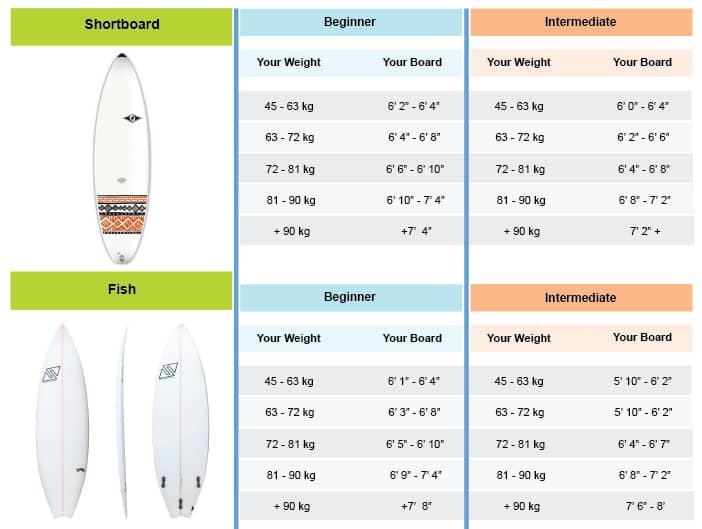
Volume and weight play a huge role in board choice because this ratio indicates how deep in the water you’ll be on a particular board, and what the size of that board is relative to you.
To figure out the ratio of your board simply divide your weight by the board volume (measured in Kgs to a Liter). The boards’ volume can be found on the board itself.
For a beginner, you are looking for a weight-to-volume ratio of around 0.9 Kg/L. This will ensure maximum ease whilst learning the basics.
For those who consider themselves intermediate and want to take the next step, the suggested ratio range is between 1.2 and 1.3 Kg/L. You will be lower in the water with this ratio and that will force you to learn how to generate your own speed to catch and keep up with waves. The smaller size and ratio also force you to work on your turns and get-ups.
3. The Right Shape
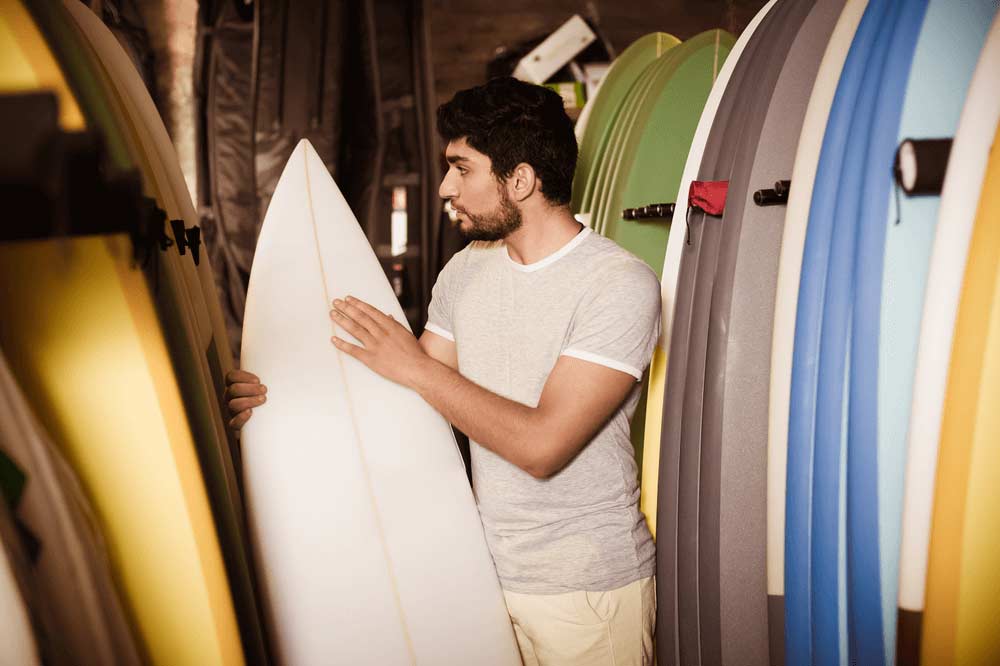
Size and volume are not the only factors to consider when asking “what size surfboard do I need?” The shape of the board is also a determining factor and can also either push you forward or keep you back in your surfing. Lets discuss the three main surfboard shapes and when they are the right pick!
i) The Longboard
The longboard is, as I mentioned, the biggest and longest of the lot. As far as surfboard sizes for beginners goes, this is your baby! It offers more stability and allows for more error than other boards. This is the go-to for beginners as it will ease you into the sport.
- Best in what conditions?
This board is best for lower smoother waves that are rolling. Longboards lend themselves well to lazy roll days for all levels of surfers. The boards’ breadth and stability are the reason it does so well on the small waves and doesn’t lose momentum the way shorter boards might.
- Advantages
This board is much safer for a beginner than other boards. It’s also more stable as I mentioned, which means it sort of lends you a hand when trying out your get-ups. Its shape and build also makes paddling through the water more effortless.
ii) The fish style board
This board can be considered as the next step up in your surfing game. Do not rush to buy one until you are sure you can handle it and have already learned all you can on a longboard. The fish style or fun board is a shorter surfboard with an alternative fin design. Turns on this board (if done properly) are also easier.
- Best in what conditions?
The fish board is best on medium waves. It has some of the stability offered on a longboard with the addition of speed. Once you’ve got your turns down you’ll find yourself having a lot of fun on the fish board on those medium waves.
- Advantages
The biggest upside to the fish board is that the learning curve one encounters when moving from a longboard to this is not significantly steep. It allows you more room to grow and refine your skills while still being somewhat considerate of you. And as I said, the turns and movements on a fun board are easier to perform.
[amazon bestseller=”Surfboard” items=”3″ grid=”3″]iii) The shortboard
This is the toughest of the boards to master but probably the most fun once you have. It’s definitely not a surfboard size for beginners! It is designed short and light and sits deeper in the water. This opens up a whole new level of surfing to you. This board is built for serious maneuvers and pro-level tricks.
- Best in what conditions?
This board is the go-to for those big boys, the largest and steepest waves that offer barrels and the like. This board is perfect when surfing vertical and for streaming through the belly of a barrel.
- Advantages
The most profound advantage of this board is the pure rush and fun. Once you’ve mastered it, you will be doing things you simply can’t on the aforementioned boards. Another advantage would be its small light design, if you can handle it. This gives you the ability to surf vertical and run barrels more easily.
When choosing a surfboard, you need to be honest with yourself about how good you and what you can handle. Choosing a board more advanced than you won’t serve you by any means. You also need to keep your weight, height, and the board volume in mind and find one that has a ratio that matches your skill level. Finally, you need to pay attention to the shape of the board you try out, and consider how the first two points factor in. If you keep these three main ideas in mind and keep it honest, you’ll no doubt find the perfect board for you, regardless of your current level. Happy surfing!

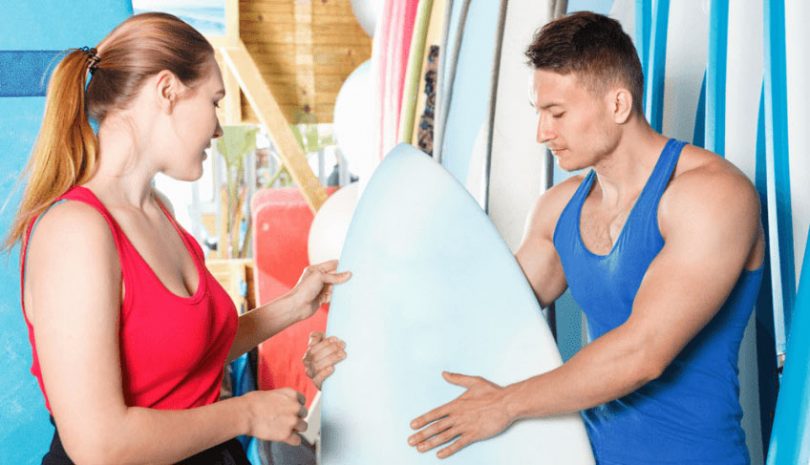
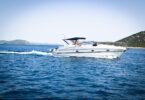



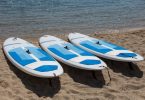

Leave a Comment